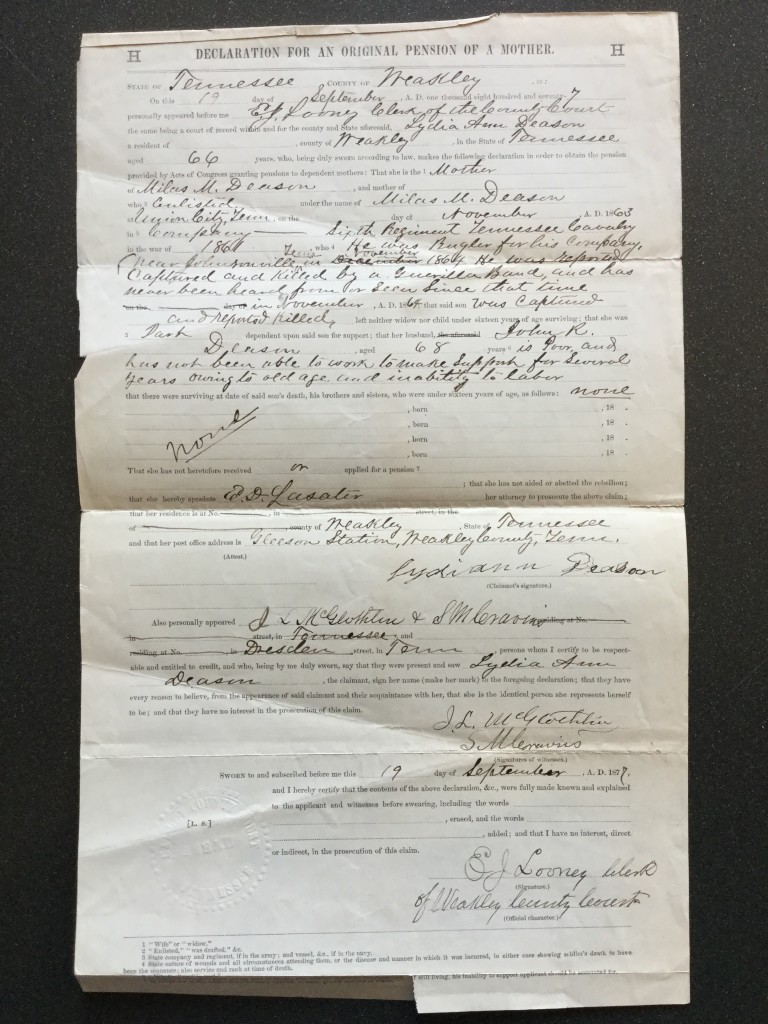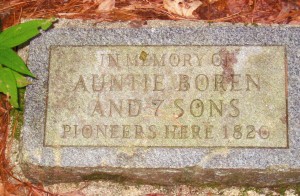Despite sworn affidavits from three soldiers who came forth and testified that her son, Milas, a Union soldier, had been executed by rebels and had not deserted as the Army concluded, Lydia Ann Deason, my 4th great grandmother, was unsuccessful in obtaining a mother’s Civil War pension. I finally made my way to the National Archives to view the complete file which contained the actual pension documents from 1877 that I had learned about from author Andrew Ward. I had high hopes of learning from these documents when the pension payments had stopped. That would give me a better idea of when Lydia likely died.
Of course, I had no idea when I told the young man at the front desk what I was looking for that in the first 30 seconds of my visit he would crush my hopes likes grapes beneath an angry’s Italian woman’s feet. “We only have the application,” he declared peering into his computer screen. “It was denied.”
Well, thanks for crapping on my day.
Nevertheless, I ventured into the bowels of the Archive, filled out the standard request form and waited an hour and 45 minutes for the file to be fetched. And it was worth it. Lydia’s broken signature appears on the document! I also learned that.her husband, John R. Deason, was 68 years old at the time. That tidbit of information cleared up whether he was born in 1809 or 1810! Bonus.
Click on the image below to open a larger version in another window.
Kenfolk: Tranthams
Relation: 4th great grandmother
Common ancestors: Lydia’s parents, James and Mary (Fitzhugh) Turbeville, are my 5th great grandparents

